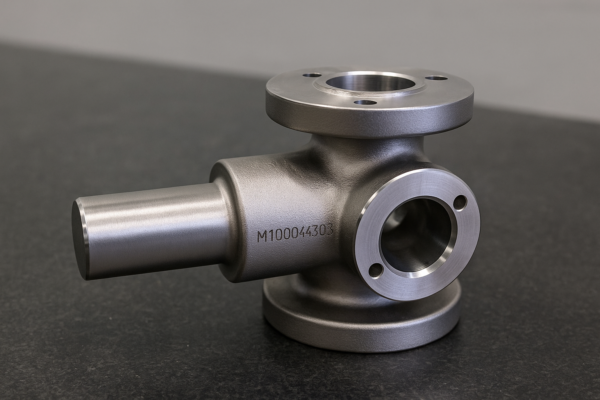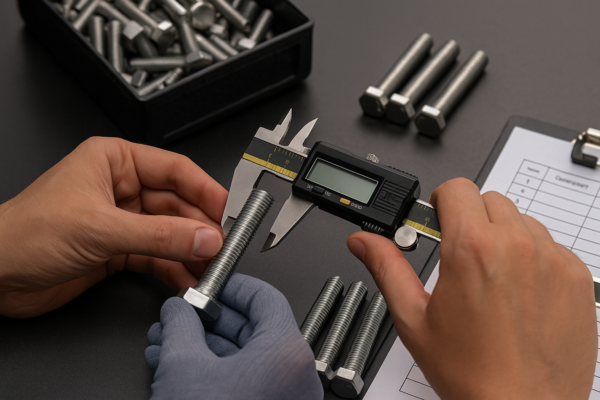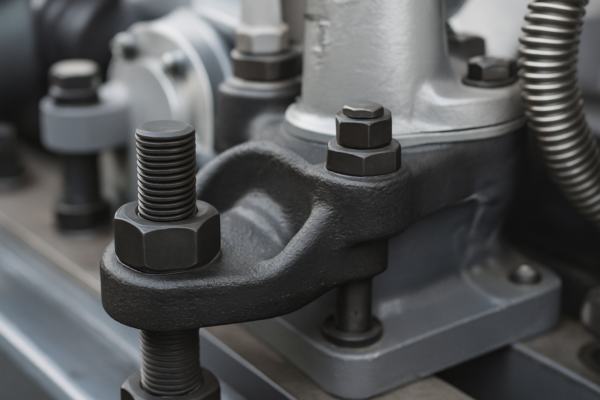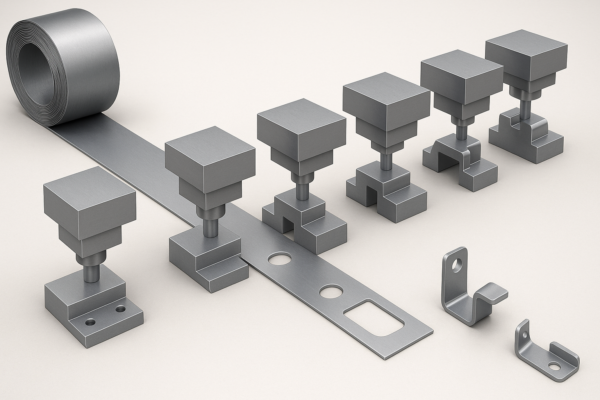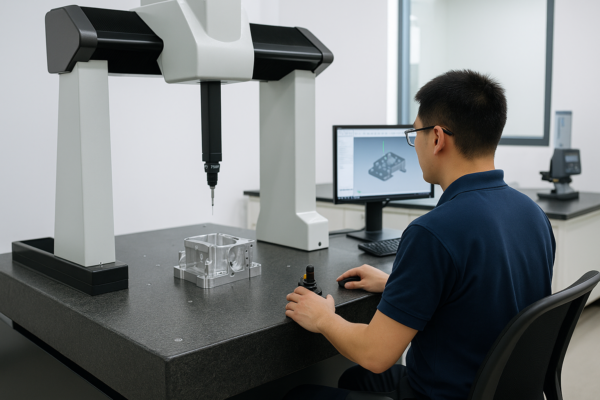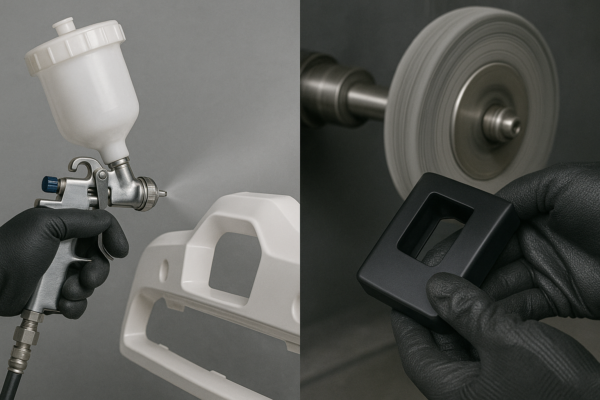What Is Green Sand for Casting? The Ultimate Guide to Clay-Bonded Molds
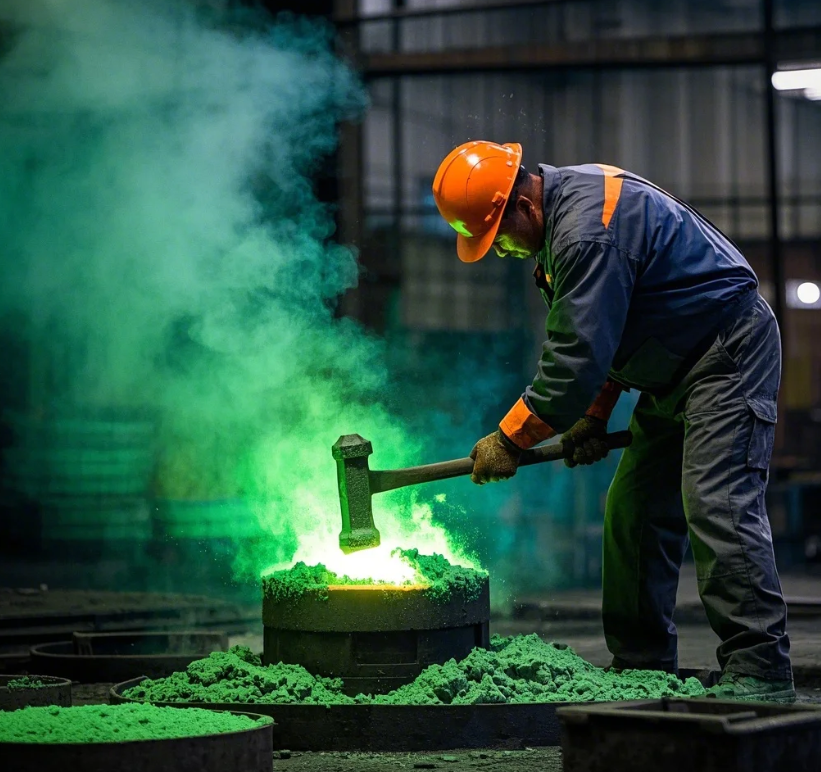
Green sand molds produce 75% of all metal castings – not because they’re literally green, but due to their moisture content when forming molds.
Snippet paragraph: Green sand is a mixture of 85-90% silica sand, 7-10% bentonite clay, and 3-5% water that forms flexible yet strong molds capable of withstanding molten metal temperatures up to 1200°C (2192°F) for aluminum, bronze, and iron castings.
The "green" refers to the uncured state of the sand mixture – not coloration.
What’s in Green Sand? The 3 Essential Ingredients
Each component serves a specific purpose in the casting process.
Snippet paragraph: High-quality green sand contains graded silica sand (AFS 50-70), sodium-activated bentonite clay for plasticity, and controlled moisture levels (typically tested via "thumbprint" squeeze tests).

Material Specifications Table
| Component | Role | Ideal Percentage | Quality Indicators |
|---|---|---|---|
| Silica sand | Refractory base | 82-88% | AFS 55-70 grain fineness, 95% SiO₂ |
| Bentonite | Binder (plasticity) | 7-10% | Swells 15x when wet (Wyoming type) |
| Water | Activates clay | 3-5% | Distilled/pH-neutral (5-7 pH) |
| Additives | (Optional) | 0-2% | Coal dust (2%) reduces burn-on |
Pro Tip: Reclaim used sand by removing metal oxides and rehydrating – properly maintained green sand lasts for 50-100 cycles before replacement.
Why Do Foundries Love Green Sand? Key Advantages
90% of aluminum foundries start with green sand before considering other methods.
Snippet paragraph: Green sand offers unbeatable cost-efficiency (<$0.50 per pound), fast mold production (under 3 minutes per mold), and sufficient detail for most industrial parts – plus it’s reusable after shakeout and conditioning.
Comparison vs Other Sand Types
| Parameter | Green Sand | Shell Sand | Furan Sand |
|---|---|---|---|
| Setup Cost | $5,000 (Basic) | $75,000+ | $20,000 |
| Cycle Time | 2-5 min/mold | 3-8 min/mold | 10-15 min/mold |
| Surface Finish | 125-250 μm Ra | 25-63 μm Ra | 63-125 μm Ra |
| Binder Toxicity | None | Phenolic fumes | Formaldehyde risk |
| Best For | High-volume castings | Precision parts | Complex cores |
Case Study: A Detroit auto foundry produces 500,000+ brake drums/year using green sand with 12-second cycle times.
The Science Behind Green Sand Properties
Moisture content and compaction determine mold strength.
Snippet paragraph: Optimal green sand has 8-12 psi compression strength (measured via "rammer" tests), 35-55% permeability for gas escape, and 4-8% moisture content – verified daily in foundry QC labs.
Critical Tests for Green Sand
| Test | Equipment | Target Value | If Off-Spec |
|---|---|---|---|
| Moisture Content | Infrared meter | 3-5% by weight | Adjust water/clay ratios |
| Compactability | Riddle sieve | 35-45% | More ramming force needed |
| Permeability | Permameter | 50-120 AFS | Reduce fines/add vent holes |
| Hot Strength | Hot distortion tester | 1.2-2.0 psi @ 600°C | Increase bentonite percentage |
Warning: Overly wet sand (>6% moisture) causes steam explosions during pouring.
Step-by-Step: How to Make Green Sand Molds
Traditional hand ramming remains viable for small foundries.
Snippet paragraph: Proper mold preparation involves sieving sand, ramming in flasks (70-80 hardness scale B), cutting sprues/gates at 10-15° angles, and venting with wires – all completed within 15 minutes before drying.
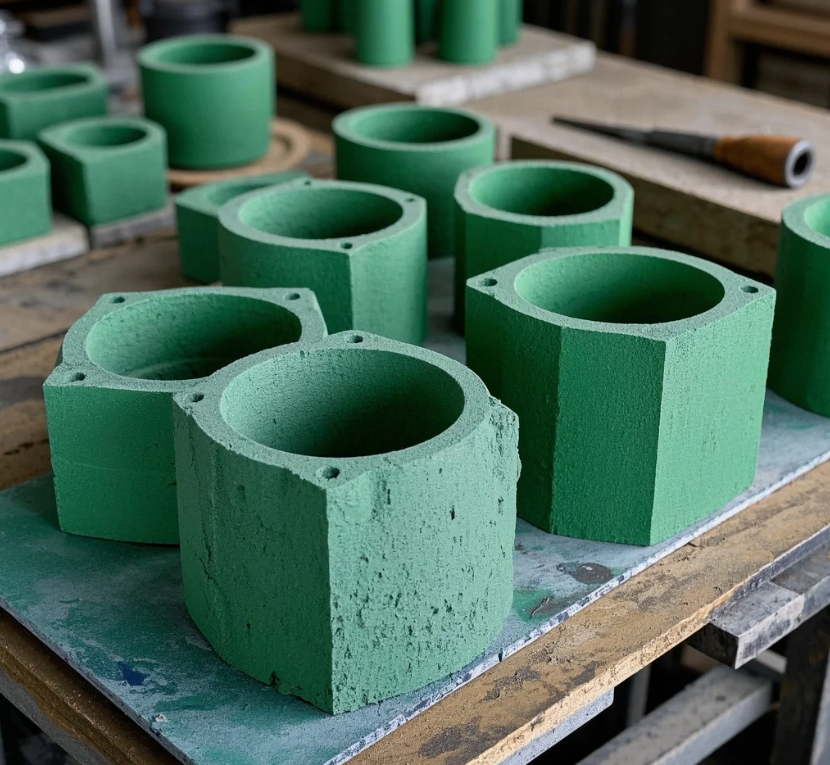
Ramming Techniques Compared
| Method | Pressure (psi) | Surface Finish | Labor Intensity | Used For |
|---|---|---|---|---|
| Hand Ramming | 2-5 | 250-400 μm Ra | High | Prototypes, art |
| Squeeze Machine | 20-50 | 125-250 μm Ra | Medium | Mid-volume runs |
| Impact Jolt | 60-100 | 100-180 μm Ra | Low | Automotive parts |
| Vacuum Compaction | 5-10 (vacuum) | 80-150 μm Ra | Medium | Thin-walled castings |
Industrial Fact: Automated green sand lines achieve 95% density uniformity vs 70-80% with manual methods.
Common Defects and How to Fix Them
30% of green sand casting failures stem from sand-related issues.
Snippet paragraph: Typical defects include gas holes (low permeability), sand inclusions (weak binders), and scabs (high moisture) – rectified by adjusting sand composition, improving venting, or modifying pouring techniques.
Troubleshooting Guide
| Defect | Visual Signs | Root Cause | Solutions |
|---|---|---|---|
| Blows | Round surface holes | Excess moisture | Reduce water to 3-4%, bake molds |
| Rat Tails | Wavy surface lines | Over-ramming | Lower compaction to 70 hardness |
| Cuts/Washes | Eroded mold areas | High pour velocity | Wider gates, lower tilt angle |
| Veining | Raised sand patterns | Thermal expansion | Add 1% cereal/pitch binder |
Data Point: Proper sand conditioning reduces defects by 40-60% in production runs.
Green Sand vs Alternative Processes
When to choose other methods over traditional green sand?
Snippet paragraph: While green sand dominates for high-volume ferrous/non-ferrous castings (<500kg), investment casting or 3D-printed sand molds are better for sub-0.1mm tolerances or prototype iterations needing CAD revisions.
Process Selection Matrix
| Criteria | Green Sand | No-Bake Resin | Investment Casting |
|---|---|---|---|
| Minimum Order Qty | 10+ | 1+ | 1+ |
| Dimensional Tolerance | ±0.5 mm | ±0.3 mm | ±0.1 mm |
| Tooling Lead Time | 1-3 days | 3-7 days | 2-4 weeks |
| Cost per kg (Al) | $0.80 | $2.50 | $8.00 |
Emerging Tech: Hybrid systems now combine green sand’s speed with 3D-printed cores for complex geometries.
Conclusion
Green sand remains the casting industry’s backbone – balancing low cost, fast production, and adequate precision for ~80% of metal cast parts through optimal sand-clay-water formulations and proper mold preparation techniques.

